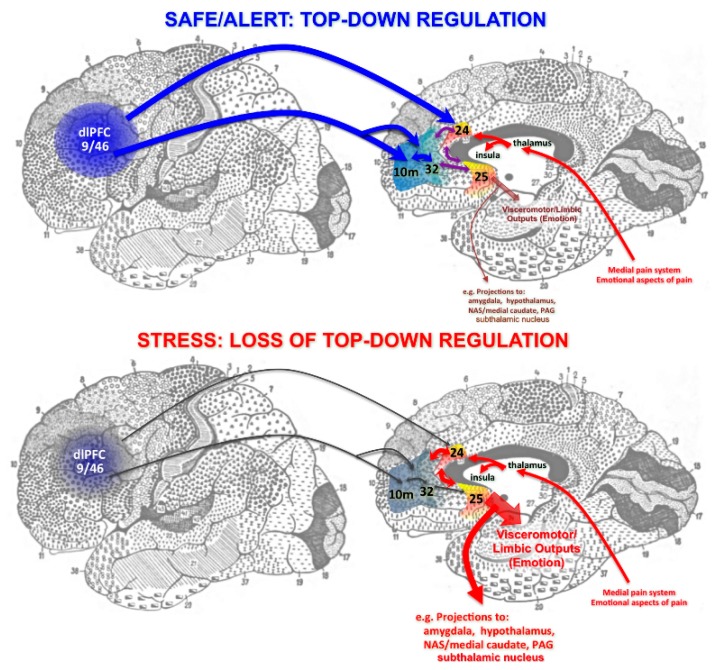Figure 1.
Schematic diagram of prefrontal cortex (PFC) circuits providing top-down regulation of emotion, and the effects of arousal state on connectivity. (Top): Under non-stress conditions, newly evolved dorsolateral PFC (dlPFC) and rostral areas (e.g., BA10) project back to anterior (BA24) and subgenual (BA25) cingulate via BA32 to regulate visceromotor output and emotional response. Note that these cingulate areas are part of the pathway that mediates the emotional aspects of the pain response. (Bottom): Under conditions of uncontrollable stress, the connectivity of dlPFC and the rostral aspect of medial PFC are weakened, and the top-down suppression of BA25 is diminished, promoting activation of subcortical structures such as the amygdala. Anatomical projections are based on tracing studies in monkeys [38], but are portrayed on a Brodmann drawing of the human brain to facilitate translation to human brain imaging results.

